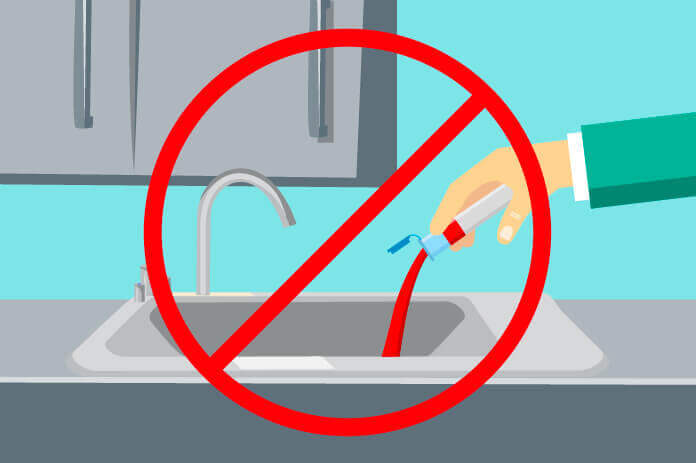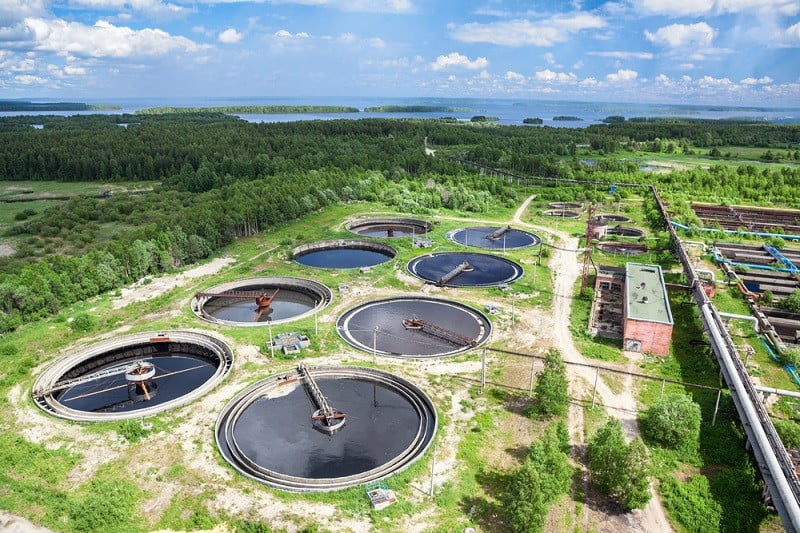Just How Fluid Waste Disposal Works: A Thorough Overview of Strategies and Technologies Utilized

Summary of Fluid Waste Kind
The complexity of fluid waste kinds demands a comprehensive understanding of their attributes and implications for disposal. Fluid waste can generally be classified right into a number of types, including industrial, municipal, farming, and unsafe waste. Each group displays unique buildings, calling for certain administration techniques to minimize ecological and wellness dangers.
Industrial liquid waste stems from making processes and frequently includes a variety of impurities, such as hefty steels, solvents, and natural compounds. Municipal fluid waste, mostly making up wastewater from households and business facilities, contains raw material, nutrients, and pathogens (industrial wastewater treatment). Agricultural liquid waste, including drainage from farms, might consist of fertilizers, chemicals, and animal waste, posing threats to water high quality and communities
Unsafe fluid waste is characterized by its toxicity, reactivity, or potential to trigger damage. Comprehending these varied liquid waste types is critical for creating efficient disposal approaches and guaranteeing conformity with environmental guidelines.
Physical Treatment Approaches

Screening is the first action, where larger bits and debris are gotten rid of from the fluid waste using displays or grates. In sedimentation tanks, larger bits resolve at the bottom, forming a sludge layer, while the clarified liquid can be more dealt with.
Filtration is an additional necessary technique that involves passing the fluid via porous products, such as sand or membranes, to record smaller fragments. This step enhances the high quality of the liquid, making it ideal for subsequent therapy processes.

Chemical Treatment Methods
Chemical treatment techniques are crucial for successfully handling fluid waste, specifically in attending to liquified and colloidal pollutants that physical approaches might not sufficiently get rid of. These techniques make use of different chemical representatives to counteract, speed up, or transform harmful compounds into less harmful types.
One common method is coagulation and flocculation, where chemicals such as alum or ferric chloride are added to promote the gathering of put on hold fragments. This process his comment is here enhances sedimentation, permitting simpler elimination of the resulting sludge. Furthermore, oxidation procedures, utilizing agents like chlorine or ozone, are employed to damage down complex organic compounds and virus, making the waste much safer for discharge or additional treatment.
Neutralization is an additional critical strategy, which adjusts the pH of acidic or alkaline waste streams to neutral levels, stopping possible injury to downstream systems and the setting. Additionally, advanced oxidation procedures (AOPs) make use of mixes of oxidants and ultraviolet light to degrade persistent contaminants, achieving a higher degree of therapy performance.
Organic Therapy Processes
Organic therapy procedures play a vital duty in the monitoring of liquid waste by using microbes to decompose organic matter and reduce pollutant levels. These procedures can be broadly categorized right into anaerobic and cardiovascular therapies, each using specific microbial communities to attain effective waste deterioration.
Cardiovascular therapy entails using oxygen to assist in the malfunction of organic materials by bacteria. This process is frequently carried out in turned on sludge systems, where aeration tanks supply a helpful setting for microbial have a peek at this site growth, leading to the oxidation of natural contaminants. The resultant biomass can be separated from treated effluent with sedimentation.
On the other hand, anaerobic therapy happens in the lack of oxygen, relying upon different microorganisms to damage down raw material. This approach is particularly advantageous for high-strength waste, as it creates biogas, a sustainable energy source, while minimizing sludge production. Technologies such as anaerobic digesters are often used in commercial and metropolitan applications.
Both anaerobic and aerobic biological treatments not just lessen the environmental influence of fluid waste yet also facilitate source recovery, making them important elements of sustainable waste administration approaches. Their effectiveness, flexibility, and effectiveness support their widespread application throughout various fields.
Emerging Technologies in Disposal
Ingenious strategies to liquid waste disposal are quickly advancing, driven by innovations in technology and a boosting focus on sustainability. Amongst these emerging innovations, membrane layer bioreactors (MBRs) have acquired grip for their capacity to incorporate biological treatment with membrane purification, leading to high-grade effluent that can be recycled in numerous applications. MBRs enable smaller footprints and much more effective procedures contrasted to typical systems.
An additional promising development is the use of anaerobic digestion combined with nutrient healing innovations, which not only treats fluid waste yet additionally creates biogas and recoups beneficial nutrients like nitrogen and phosphorus. This twin benefit enhances source performance and lowers environmental influence.
Additionally, progressed oxidation procedures (AOPs) are being taken on for the destruction of intricate natural toxins. These methods utilize powerful oxidants and stimulants to break down contaminants at the molecular level, supplying a very efficient service for challenging waste streams.
In addition, the combination of artificial knowledge and artificial intelligence in waste monitoring systems is optimizing functional performance and predictive maintenance, resulting in reduced costs and boosted environmental compliance. look at this website These modern technologies show a significant shift in the direction of even more efficient and lasting liquid garbage disposal methods.
Conclusion
To conclude, efficient fluid waste disposal demands a thorough understanding of different techniques and modern technologies. The integration of physical, chemical, and organic treatment techniques makes sure the efficient administration of varied waste types. In addition, the appearance of ingenious technologies improves therapy efficiency and advertises sustainability in waste monitoring methods. By continually advancing these methods, it becomes possible to attend to the growing challenges connected with liquid waste, eventually adding to ecological defense and resource recovery.
Fluid waste disposal is a vital facet of ecological management, calling for an extensive understanding of numerous techniques and technologies tailored to different waste types. Liquid waste can extensively be categorized into numerous types, including industrial, community, farming, and harmful waste. Agricultural fluid waste, consisting of overflow from ranches, may contain fertilizers, chemicals, and pet waste, presenting threats to water top quality and ecological communities.
Various physical treatment approaches play an essential duty in handling liquid waste effectively - industrial wastewater treatment.In final thought, efficient liquid waste disposal requires a detailed understanding of various techniques and technologies